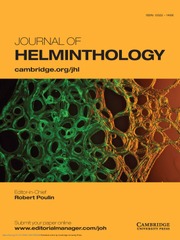No CrossRef data available.
Article contents
Towards a standardised methodology of Trichinella larval counting for research purposes
Published online by Cambridge University Press: 21 November 2025
Abstract
Trichinella spiralis (T. spiralis) is a zoonotic parasitic worm that has a significant impact on both public health and the livestock industry. It is widely used in experimental studies because of several unique features of its life cycle that can be completed in a single host, including distinct intestinal and muscular phases of infection, and it can be easily maintained in laboratory animals. These characteristics make T. spiralis a valuable model for evaluating the efficacy of new drugs and vaccines against parasitic infections. The current work aims to evaluate the procedures used for Trichinella larval counting in experimental studies by comparing the magnetic stirring digestion method (MSDM) with individual muscle digestion and compression techniques under standardised, controlled conditions to assess their effectiveness and applicability. Fifteen male Swiss albino mice were orally infected with T. spiralis and sacrificed on day 35 post-infection. They were divided into three groups: group 1—MSDM for total larval count; group 2—individual digestion of masseter, diaphragm, gastrocnemius, and tongue muscles; and group 3—slide compression method of the same muscles. MSDM yielded the highest larval counts, with individual muscle digestion and compression methods generally producing significantly lower results, except tongue digestion, while correlation and concordance analyses identified gastrocnemius compression as an alternative despite overall poor agreement with the reference method. Therefore, MSDM is the most accurate method for larval counting in experimental studies, compared to individual muscle digestion or compression methods.
Keywords
Information
- Type
- Research Paper
- Information
- Copyright
- © The Author(s), 2025. Published by Cambridge University Press

